Celebrate Women’s History Month with Library resources!
March is Women’s History Month! A time for commemorating the achievements and contributions of women throughout history. Growing out of the first International Women’s Day on March 8, 1911, Women’s History Month was established when the National Women’s History Project successfully petitioned Congress in 1987 to designate March as a month to raise awareness of the full scope of often-overlooked women’s history. If you would like to dig more into women’s history, the Library has an abundance of resources to explore.
Library resources
- Browse Library holdings on women and gender in Virgo.
- Visit Library research guides to Women, Gender, and Sexuality and Primary Sources about Women and find links to many resources on women’s history.
- Watch streaming Video available from the Films on Demand collection.
Book titles of interest in the Library include:
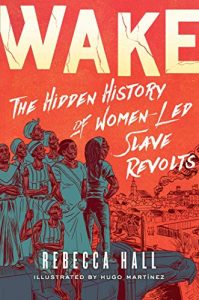 "Wake: The Hidden History of Women-led Slave Revolts" by Rebecca Hall and Hugo Martínez
"Wake: The Hidden History of Women-led Slave Revolts" by Rebecca Hall and Hugo Martínez
(on reserve in Clemons Library)
A graphic novel illuminating the experiences of two historical Black women rebels on the slave ship The Unity. Carefully tracing centuries-old historical evidence and imaginatively reconstructing likely scenarios where the record is silent, the book is a transformative and transporting work. It brings to three-dimensional life Adono and Alele and their pasts as women warriors, illustrating the humanity of the enslaved, the reality of their lived experiences, and the complexity of the history that has been, till now, so thoroughly erased.
"A Black Women's History of the United States" by Daina Ramey Berry and Kali Nicole Gross
From the first African women to set foot on land that later became the United States to African American women of today, the authors have foregrounded history that is more often pushed into the shadows by white patriarchy. “A Black Women’s History of the United States” reaches far beyond a single narrative to showcase enslaved women, freedwomen, religious leaders, artists, queer women, activists, and women who lived outside the law.
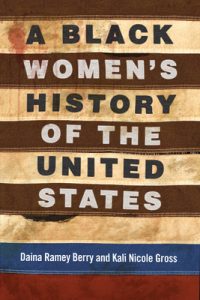
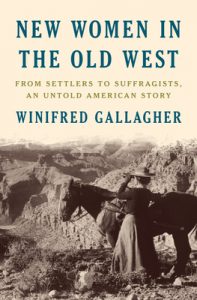 "New Women in the Old West: From Settlers to Suffragists, an Untold American Story" by Winifred Gallagher
"New Women in the Old West: From Settlers to Suffragists, an Untold American Story" by Winifred Gallagher
(available in e-book format)
Little-known history of the first women who fought for and won the right to vote in the United States, and did so decades before the passage of the 19th amendment. Even as they helped dispossess Native and Hispanic people, these persistent women created homes on weather-wracked prairies and built communities out of boom towns and muddy mining camps while playing a vital, unrecognized role in forging America’s Suffragist movement.
"The Secret History of Wonder Woman" by Jill Lepore.
A cultural history of DC comics superhero Wonder Woman traces her creation and enduring popularity, drawing on interviews and archival research to reveal the pivotal role of feminism in shaping her seven-decade story. Created by psychologist and writer William Moulton Marston in 1941, Wonder Woman was born amid a spirit of empowerment among working women during World War II, inspired by Marston's own unconventional relationship with two powerful women in his life.
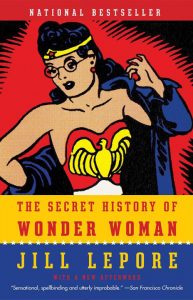
The rise of industrialization and reform in “The Gilded Age and Progressive Era”
Technological innovation, the concentration of vast wealth in few hands, government corruption, anti-immigrant hysteria, and progressive proposals to combat social and economic disparities: These may seem like items pulled from today’s headlines, but they entered America’s consciousness more than a century ago in an era that took its name from Mark Twain’s satiric novel of greed and corruption, “The Gilded Age: A Tale of Today” (1873). Now you can find primary sources (business, legal, and personal papers) documenting the rise of American modernity in The Gilded Age and Progressive Era located in the Library’s A-Z Databases list.
Learn about the high-rise transformation of American cityscapes in the papers of the architectural firm McKim, Mead & White. Learn about personal and business dealings of the rich in the papers of John Jacob Astor and John D. Rockefeller as they built family dynasties from successes in real estate and oil. Learn the extent of government corruption in the papers of Chauncey Mitchell Depew, lawyer for Cornelius Vanderbilt’s New York Central Railroad, who bought his way into the United States Senate by favoring corporate interests. Learn how in the 1890s countervailing forces of progressive reform moved the nation’s economy from laissez-faire capitalism to regulation of monopolies and turned exploited immigrants into organized labor.
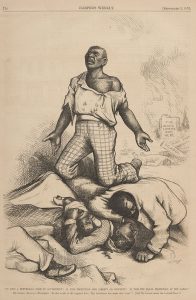
Although past histories have concentrated on the two percent of American households that controlled more than a third of the nation’s wealth, the database uncovers details about the bottom 40% who had no wealth at all, including African Americans left behind when workplace reform became a concern for the welfare of white workers only.
The daybooks of William O’Gorman, Overseer of the Poor in Newtown (now Elmhurst) in the New York borough of Queens, reveal how the poor fared while the rich played. Accounts and activities include descriptions of visits to formerly enslaved African Americans and immigrants in need, and the circumstances and history of individual cases.
A scrapbook in the McKim, Mead & White papers shows the harm perpetrated on Native people in the name of uplift. A clipped article on The Ramona Industrial School for Apache Girls in Santa Fe boasts of bringing “genuine Apaches” from three hundred miles away and transforming them from “unkempt girls in moccasins, buckskins, blankets and paint into eager pupils who are dressed and can read, count, write, draw, sing, sew and work like American white girls in our own home …” The goal was to train the girls “to become skilled cooks and housekeepers … in American households.”
Documents are tagged with at least one theme to help guide your study. Key themes include:
- Architecture
- Art and Literature
- Business
- Charity and Philanthropy
- Industry
- International Affairs
- Labor Movement
- Leisure and Entertainment
- Material Culture
- Politics and Corruption
- Poverty and Inequality
- Protests and Strikes
- Reform
- Society and Events
- Urban Development
Find diasporic streaming content this Black History Month 2022 and beyond!
This month’s post comes to us from Katrina Spencer, Librarian for African American and African Studies.
It’s February and again we gather a variety of content from the UVA Library to feature and present to you. The aim of Black History Month is to celebrate the contributions that African Americans have made in the United States. In this post, we share some streaming content that was made by and about African Americans, and also titles that represent some broader areas of the African diaspora. Places visited in the real and fictionalized filmic tales below include New York City, Philadelphia, Nigeria, Kenya, France, Portugal, Cape Verde, and Spain, demonstrating several, but not all, of the worldwide geographies Black people occupy. Themes include the representation of Black people(s) in art and media; enduring character archetypes like the mammy; fertility; same-sex relationships in conservative, heteropatriarchal societies; coming of age; searching for one’s roots; and breaking away from a toxic parent.
See a listing of streaming video portals at UVA. You can also contact Research Librarian Miguel Valladares Llata for more on Latin America and the Caribbean, and Video Librarian Leigh Rockey to learn more about the Library’s streaming content. Can’t get enough? Two film-based resources that exist beyond UVA include the Black Film Archive and A Guide to Essential, Underrated, and Flat-Out Extraordinary Films by Black Women Directors.
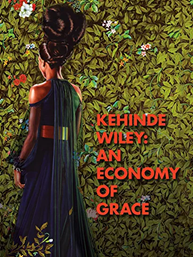 “Kehinde Wiley: An Economy of Grace,” 2014
“Kehinde Wiley: An Economy of Grace,” 2014
Platform: Public Broadcasting Service (PBS)
Twenty first century painter Kehinde Wiley is in his comfort zone painting the Black male form superimposed on his trademark background of vibrant, colorful florals. In this documentary, the audience follows his departure from habit as he prepares to paint Black women recruited from a shopping district in Brooklyn. The short film tracks his project from its conception, to planning, to execution, culminating with a triumphant showing of his portraits hung in a New York gallery. It is a pleasure to see the models re-envision themselves, taken from the urban concrete to the lush and regal imaginings of the canvas. I’d recommend this work to any art history major and/or anyone intending to work in a museum.
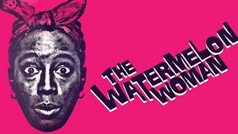
“The Watermelon Woman,” Cheryl Dunye, 1996
Platform: Kanopy
Early 1990s filmmaker Cheryl Dunye explores the “Mammy” trope threaded through early 20th century cinematic works. In this film, her fictional job at a video rental store in Philadelphia positions her well for this research. Her quest, however, takes her on an unanticipated journey in which she encounters frosty information workers, interracial relationships, and homophobia. Despite, or perhaps because of its many competing narratives, unresolved conflicts, and blurry storylines of fiction and non-fiction, this documentary-style work won best feature film in the 1996 Berlin International Film Festival. I’d recommend “The Watermelon Woman” to anyone interested in the history of cinema led by directors from the LGBTQ community.
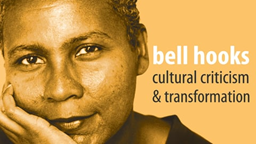 “Bell Hooks: Cultural Criticism and Transformation,” Sut Jhally, 1997
“Bell Hooks: Cultural Criticism and Transformation,” Sut Jhally, 1997
Platform: Kanopy
Consider this documentary work a primer on one of the most revered and prolific cultural critics of the 20th century, bell hooks, whose earthly journey came to an end, December 15, 2021. A feminist scholar and university professor, hooks is known for explicitly and regularly describing and naming a complex network of structures — white supremacist capitalist patriarchy — that shape life, social engagement, and media, nationally and globally. She regularly used this lens to deconstruct what images in popular media convey about the values and fears of the people of the United States. The 61-minute work includes references to several films and prominent creators of the 1990s, including Madonna and Spike Lee. I’d recommend this work to anyone interested in media studies and/or women, gender, and sexuality studies.
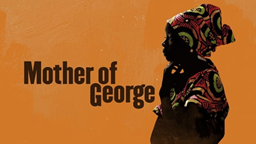
“Mother of George,” Andrew Dosunmu, 2013
Platform: Kanopy
Largely about the clash between tradition and modernity, Adenike finds herself in the new world of Brooklyn, New York, an ocean away from her Nigerian home, making a life alongside her beloved husband, Ayodele. After 18 months of wedded bliss without conception, Adenike’s in-laws become restless. Desperate to appease, Adenike considers alternatives that threaten the same traditions she is trying to uphold. The film’s colorful costume design is a pleasure to behold and the storytelling is so intimate that it could take place in any major metropolis. I recommend this work for people who are curious about West African aesthetics, celebrations, dress, and foods, and moreover to anyone whose parents share opinions about their offspring’s fertility.
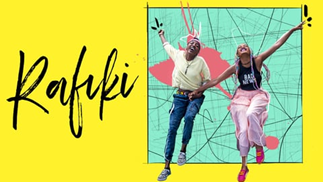
“Rafiki,” Kanuri Wahiu, 2018
Platform: Kanopy
Language: Both Swahili and English with English subtitles
Kena and Ziki fall hard for one another in their small, hyper religious, and patriarchal town, Slopes, in Kenya. In a space where privacy is impossible and conservative values are king, they struggle to nurture their love. With astute social commentary on what happens when Christianity, misogyny, homophobia, and the legacies of colonialism all meet, “Rafiki” invites viewers to view same-sex relationships with compassion. The film is excellent in its telling of place and time, documenting the contemporary lifestyles of young Kenyans, their dreams, their fashions, and the ways in which they confront modernity, determining what they want to hold onto from the past and what they want to release. I’d recommend this film to anyone desiring to study abroad in Africa, anyone studying Swahili, and anyone enrolled in a Women, Gender, and Sexuality course.
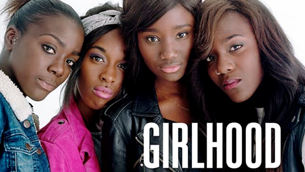
“Bande de Filles / Girlhood,” Céline Sciamma, 2014
Platform: Kanopy
Language: French with English subtitles
Trigger Warning: This film includes physical violence and sexual aggression.
When Marieme realizes she will not graduate and continue her studies, her life is thrown into turmoil. In a vulnerable moment as she grapples with her fear, she is tenuously welcomed into a group of girls who aimlessly wander the banlieues (suburbs) of Paris in search of amusement. Marieme learns to dress herself in cool, hard, and hip fashion, to drink, to smoke hookah, and to fight to defend her neighborhood’s honor. As the coming of age narrative progresses, Marieme loses touch with her innocence and comes to learn the threats that accompany crossing the threshold into womanhood, among which is the tarnishing power of a damaged reputation. I’d recommend this work to anyone wanting to know more about Paris beyond the Eiffel Tower and the Champs-Elysées as it negates much of the carefully curated depictions of the city and highlights the contemporary struggles faced in the world’s grand metropolises.
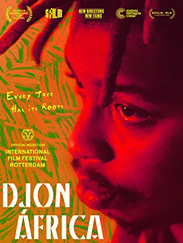 “Djon África,” João Miller Guerra and Filipa Reis, 2020
“Djon África,” João Miller Guerra and Filipa Reis, 2020
Platform: Digitalia
Language: Portuguese with English subtitles
Miguel finds himself stuck between two worlds: Portugal, where he was born and raised by his maternal grandmother and where he has lived for 25 years, and Cape Verde, the country of his father’s origin — a place that has authored his African features, yet a place he has never known. He is not wholly European and not entirely African: he is both. He decides to visit his father’s island country in the Atlantic to get in touch with his roots and to meet Miguel, Sr., his elusive namesake. Arriving in Cape Verde, Miguel, Jr. launches a languid odyssey of serendipity and misadventure, meeting young women, dancing on the beach, performing labor for a matriarchal elder, and getting to know more Cape Verdean landscapes than you can count. The film is a love letter to the African coastlines it features with countless stills of the islands’ natural beauty, each worthy of a postcard of its own. I’d recommend this work to anyone who is considering joining the Peace Corps, working for an NGO, or performing other humanitarian labor in Africa and/or anyone studying the legacies of Lusophone colonialism.
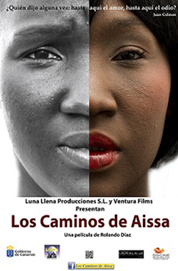
“Los caminos de Aïssa/The Pathways of Aïssa,” Rolando Diaz, 2013
Platform: Digitalia
Language: Spanish with English subtitles
Trigger Warning: This film includes discussion of suicide, abortion, and emotional abuse.
Aïssa is a young African woman who was born in Cameroon and emigrated to Spain from Equatorial Guinea. Having a contentious relationship with her mother, she tries to make a life for herself in Tenerife, the largest of the Canary Islands. Her days are spent rehearsing for dance shows, volunteering with the Red Cross, designing costumes, modeling, and waitressing. Some nights she spends go-go dancing in popular clubs. This intimate documentary tells one story of what it can mean to be uprooted as a Black African living in white Europe. I’d recommend this film to anyone pursuing global studies, as it highlights fraught, contemporary complexities in Spain which are likely invisible to the casual tourist.
“Transcripts of the Malcolm X Assassination Trial” — Window on a turbulent time
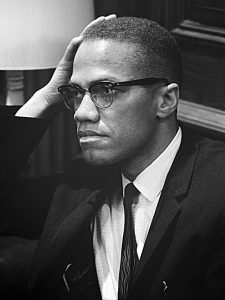
Learn about the assassination of civil rights leader Malcolm X in the new Library resource “Transcripts of the Malcolm X Assassination Trial.” At the time of his assassination, Malcolm X was seen as a controversial figure for giving voice to ideas that remain relevant to this day in light of the continued killings of unarmed Black people. He stated that it was hypocritical of whites to expect that Black people would not arm themselves for defense against racists. He told African Americans not to trust white liberals who, he argued, thought of them as “knee-grows,” and that Black people should see themselves as part of the majority of the world’s population that was brown. He was a follower of Islam but broke with the Nation of Islam and its leader Elijah Muhammad who espoused Black separatism. He openly criticized Elijah Muhammed and told Alex Haley, writer of The Autobiography of Malcolm X, “If I’m alive when this book comes out, it will be a miracle.”
On February 21, 1965, Malcolm X was preparing to address the Organization of Afro-American Unity in Manhattan’s Audubon Ballroom when a disturbance broke out. Malcolm and his bodyguards rushed into the crowd to restore order. Gunfire erupted, silencing a voice whose message seems more prescient with the passage of time.
The “Transcripts of the Malcolm X Assassination Trial” resource contains the full record of the New York State Supreme Court proceedings against three men charged in the assassination. It includes forty-two fully searchable manuscripts that can be downloaded as PDFs or read as plain text on the web:
- Full testimony of all witnesses.
- Testimony of two witnesses who spoke in secrecy to hide their identities.
- Preliminary motions.
- Summations.
- The court’s charge.
- Verdicts and sentences.
- A confession made years after the trial by one of the men convicted.
For anyone interested in the life of the charismatic civil rights leader and in the civil rights movement of the 1960s, the “Transcripts of the Malcolm X Assassination Trial” is a valuable research tool shedding light on a unique and turbulent time in American history. It can be located in the Library’s A-Z Databases list.
Behind serpentine walls: Centering enslaved laborers at UVA
Through January, we’re publishing year-in-review highlights from FY2021. Download a full PDF of this year’s Annual Report to read more! For this final story, we encourage you to “visit” us—wherever you are—through a new virtual Walking Tour.
In spring of 2020 the Library added to the University’s store of knowledge about the enslaved African Americans who performed work vital to the functioning of UVA in the 19th century. Joining with UVA Landscape Architect Mary Hughes, Chief of Staff of the Division for Diversity, Equity, and Inclusion Meghan Faulkner, and Assistant Dean and History Professor Kirt von Daacke, a team from the Library conducted research, contributed text, and provided rare images from Special Collections to create a new virtual tour as part of the Walking Tours of Grounds app. The new tour, “Enslaved African Americans at the University of Virginia,” updates a print brochure published earlier by the President’s Commission on Slavery and the University.
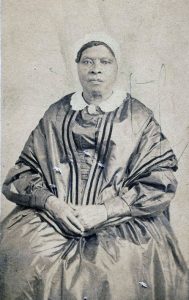
The app is part of President Jim Ryan’s initiative to add context to the story of UVA’s past by emphasizing the contributions to University life made by enslaved people. According to team leader Elyse Girard, Executive Director of Library Communications and User Experience, “Access was really at the heart of the creation of this digital tour.” Anyone with internet may download the app for a view into the world of the enslaved laborers and artisans who excavated the terraced contours of the Lawn in 1817 and literally built the University, laying many thousands of bricks made of clay which they dug from the earth and then molded and fire-hardened in kilns. Viewers can also see how people who were rented to hotelkeepers as property rose from their quarters in basements and outbuildings before daylight every morning to haul water, lay fires, and prepare meals for faculty and students, in many cases laboring behind the high serpentine walls that were constructed to conceal their presence.
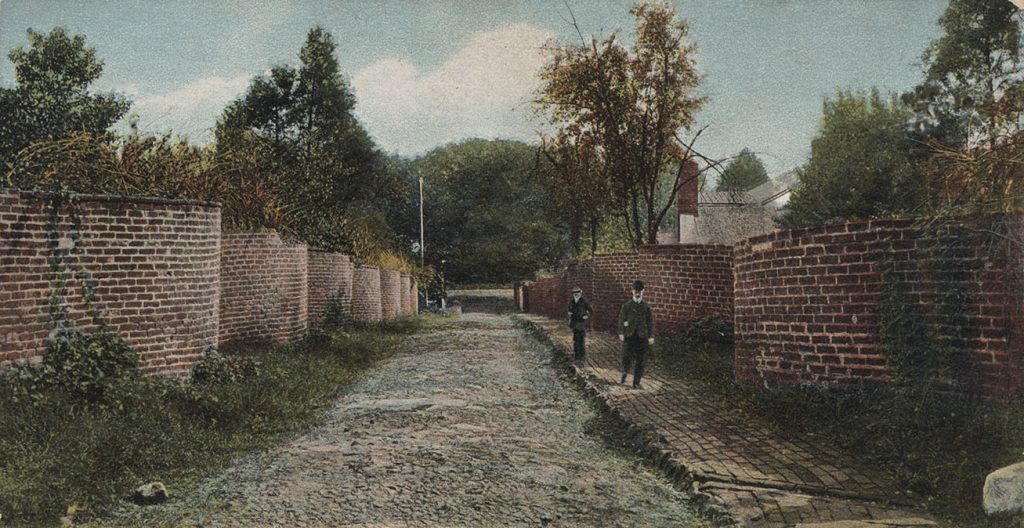
Only 600 names of UVA’s estimated 4,000 enslaved workers are currently known. Among them are husband and wife William and Isabella Gibbons who were divided by enslavement to serve professors in separate households. William Gibbons, a butler, taught himself to read by “observing and listening” to white students. His was a quiet resistance to prohibitions against educating enslaved people. Isabella Gibbons, a domestic servant, likewise risked punishment by teaching their daughter in secret. UVA residence hall Gibbons House is named in their honor.
Free people of color also resisted the social path that whites had mapped out for them. In 1833, seamstress Catherine “Kitty” Foster purchased a little more than two acres which became part of an African American neighborhood known as Canada. An aluminum frame has been erected which casts a shadow tracing the foundation of her house, recovering an idea of the physical space in which people of color lived and worked.
The tour includes a stop at the newly dedicated Memorial to Enslaved Laborers, where hundreds of names of the enslaved at UVA are engraved into the memorial’s innermost ring. Names of enslaved laborers still unknown are represented by slashes etched into the granite of the memorial. Research is ongoing to identify the many individuals not yet recognized, and these “memory marks” serve as placeholders in hopes that the missing names will one day be added.
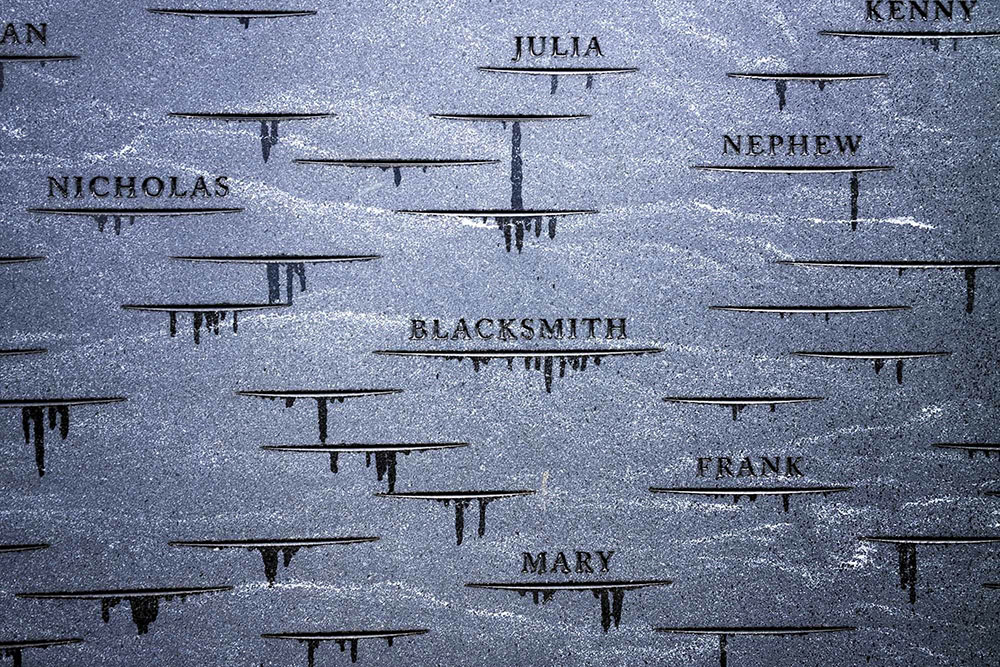
Follow changing perceptions of gender in “Gender: Identity and Social Change”
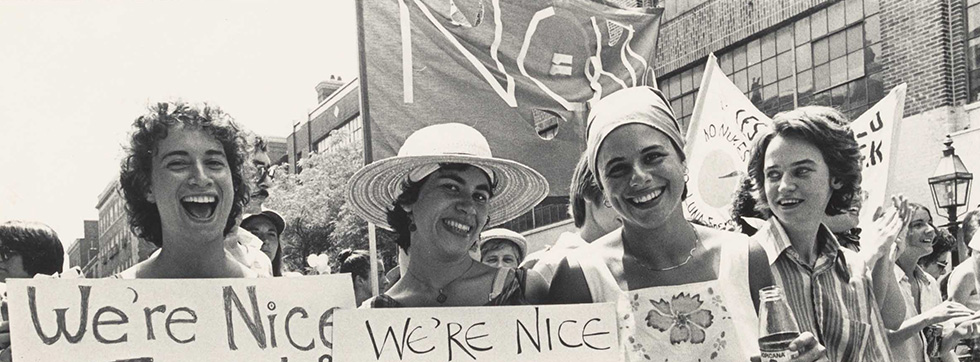
The Library’s new online resource “Gender: Identity and Social Change” examines the history of gender in the English-speaking world, beginning with coercive enforcement of gender roles in the nineteenth century and moving through twentieth century activism toward a more inclusive reality. The experiences of people, both famous and unsung, reveal how views of gender have impacted women’s suffrage, feminist movements, employment and the workplace, personal conduct and manners, and education and legislation.
Material in “Gender: Identity and Social Change” has been compiled from extensive international archival collections in Great Britain, the United States, Canada, and Australia, showing the significant changes in perceptions of gender over time. Primary sources include records of women’s and men’s organizations and interest groups, advice literature and etiquette books, personal diaries and correspondence, pamphlets, speeches, newsletters, and newspaper clippings. The resource also makes available a rich selection of visual material, including photographs, illustrations, posters, scrapbooks, and objects that shed light on both key historical figures and ordinary people.
Primary documents in the collection cover the following topics and more:
- Women’s Suffrage — The fight for voting rights, including campaigns, activities, organizations, and pioneers of gender equality.
- Employment and Labor — Changing expectations in the workplace. The contrast between paid and unpaid labor, and the divide between public and private work environments.
- Feminism — Feminist activism, which went from challenging gender inequality in the nineteenth century to demanding equality in employment and education in the 1960s.
- Legislation and Legal Cases — The fight for equality in the courts. Bills and acts that shed light on the legal history of women’s suffrage.
- Government and Politics — Changes to traditional gender roles traced through activism for positive change. Includes correspondence, reports, and first-hand accounts.
- Leisure and Entertainment — Periodicals, books, and records of how leisure activities that were considered appropriate for a specific gender have shifted over time.
- Education and Training — Male and female perspectives on both formal and informal education and how opportunities were defined by gender.
- Conduct and Politeness — Nineteenth century advice literature and etiquette books defining proper conduct for different genders, such as “How to stand correctly,” “How to Serve a Dainty Tea,” and “Advice to young men on their duties and conduct in life.”
- Sex and Sexuality — Gender, physical relations, sexual orientation, and self-expression. The response of different segments of society to sex, sexuality, and topics which were considered taboo.
- The Body — Gendered perceptions of the body that analyze and challenge traditional gender roles: how we dress our bodies, abortion, and more.
Other materials in the resource include essays, biographies, and video interviews of leading academics, adding background and context to the primary sources, and a chronology that traces events on a timeline. Find out about the jailing of John Stuart Mill in 1823 for distributing pamphlets on birth control, about Oberlin College in Ohio becoming the first college in the United States to admit men and women together in 1833, or that a union run completely by female textile workers petitioned the Massachusetts General Court in 1845 demanding a 10-hour workday.
Five Reasons to visit the Fiske Kimball Fine Arts Library
Guest post by Fine Arts Library Public Service Manager April Baker
Just off Rugby Road and behind the Fralin Museum of Art, the Fiske Kimball Fine Arts Library is located in Campbell Hall, home to UVA’s School of Architecture. Built in 1970, Campbell Hall was recently added to the Virginia Landmarks Registry. The Fine Arts Library, with its sunny spaces lit by floor-to-ceiling windows, is where artists, architects, dancers, actors, art historians, and students come to study and meet.

Five Reasons to visit the Fine Arts Library:
- Accessibility to all. Recent renovations have added gender-inclusive, wheel-chair accessible restrooms to the library’s main and second floors! All four bathrooms are spacious and private with single-user locks. While there is no elevator, there is wheelchair access to the second floor through the Architecture School.
- Reservable spaces. Spaces are available for study groups, job interviews, planning sessions, consultations, practicing skits, and working on art projects. In the Materials Collection Room you can spread out your project work, study architectural building materials, or just meet up with friends. The Conference Room (mini-board room) is ideal for group study and club meetings. And the R-Lab is a creative collaborative space perfect for forums, presentations, and group discussions.
- Robust collection. New books arrive daily — current periodicals with timely scholarship in the areas of art, architecture, urban planning, archeology, and indigenous studies, and large folio volumes containing glorious images. Architectural building materials (including design samples, from flooring to insulation to windows to green insulation blocks made from dead fungi) are housed in the Materials Collection room, and the library’s reference section contains the complete “Corpus Vasorum Antiquorum,” detailing the shapes of vases.
- Creative tools. The library has high-end scanners connected to Macs equipped with Reaper and Unity programs (useful in creating video games and general visual rendering), and the Harris Matrix program for archeologists diagraming stratum.
- Study carrels for graduate students. The Fine Arts Library has 44 reservable study carrels that may be checked out for the academic year and can be renewed each year. These assigned desks are used by grad students to study and store books. There are carrels which are still available for the spring semester!
Have a research question? Please feel free to make an appointment with Research Librarian for Architecture Rebecca A. Coleman, or Art, Archaeology, Classics, and Indigenous Studies Librarian Lucie Stylianopoulos. And do come and visit, whatever you are studying, and discover why you just might make Fiske Kimball your personal go-to library! See maps and directions to all Library locations.

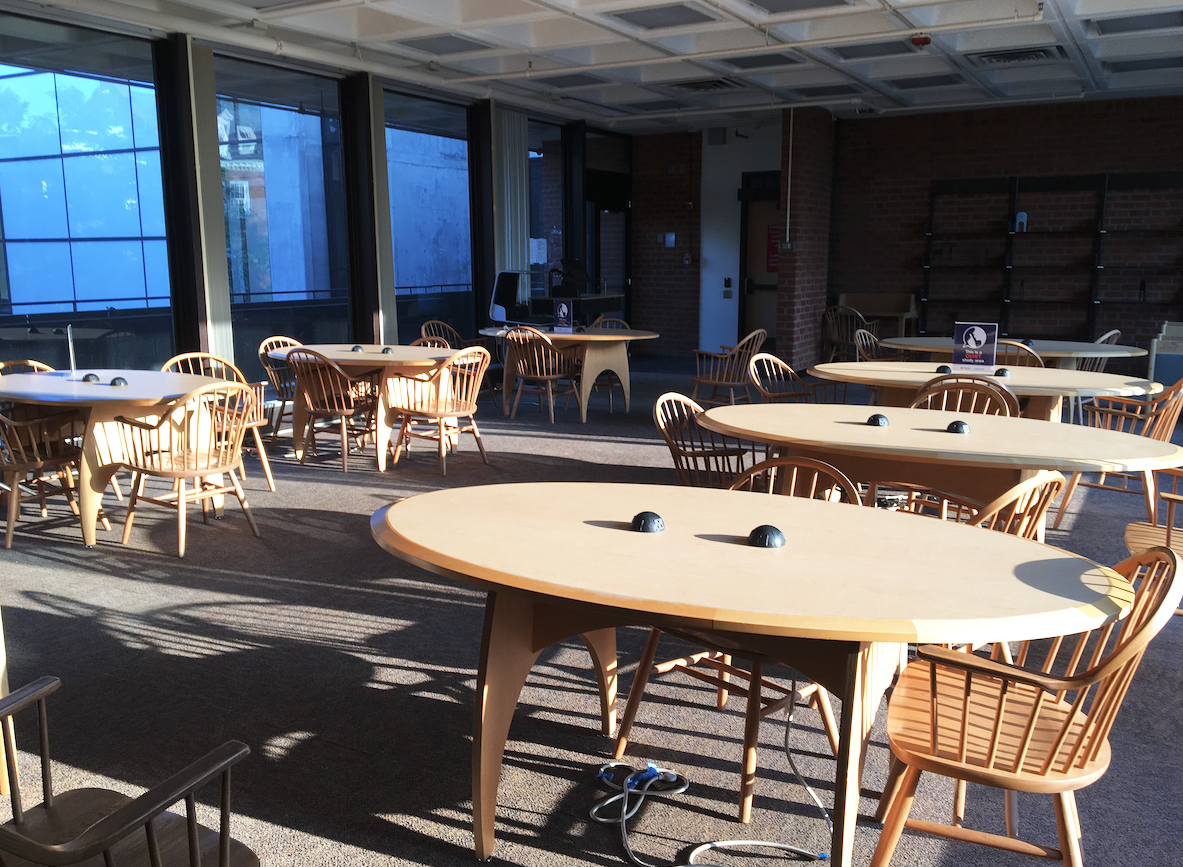
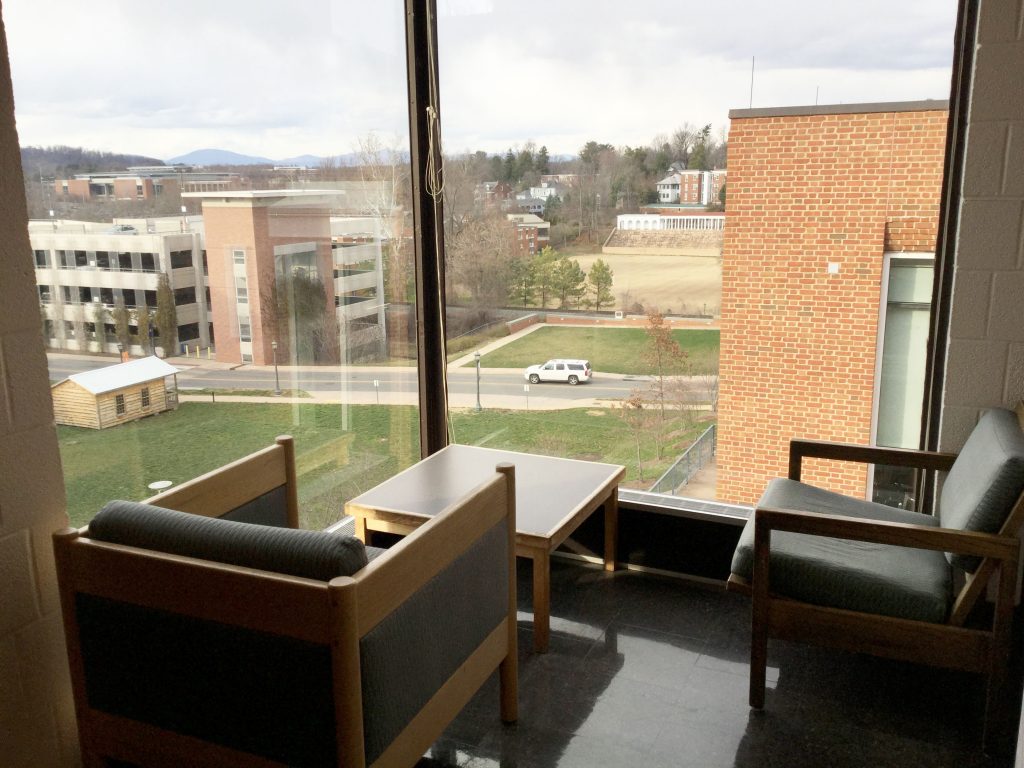
Welcome to Native American Heritage Month 2021!
November is Native American Heritage Month! Follow the conversation below between Librarian for African American and African Studies Katrina Spencer and other Library staff discussing recommended titles from the Library collection about the histories, cultures, lands, and politics of Indigenous peoples of the Americas. For research guidance and queries about Indigenous groups, visit the UVA Library’s Native American & Indigenous Studies (NAIS) research guide or contact our Librarian for Art, Archaeology, & Indigenous Studies, Lucie Wall Stylianopoulos.
Katrina Spencer, Librarian for African American & African Studies: Hey, Lucie, tell us about some of the notable works in our collection that address Indigenous Studies.
 Lucie Wall Stylianopoulos, Librarian for Art, Archaeology, & Indigenous Studies: I’d like to share a couple! First, Robin Wall Kimmerer’s "Braiding Sweetgrass: Indigenous Wisdom, Scientific Knowledge, and the Teachings of Plants" (available in print and e-book formats). Wall Kimmerer is a member of the Citizen Potawatomi Nation and the SUNY Distinguished Teaching Fellow of Environmental Biology. She describes herself as a “traveler between scientific and traditional ways,” successfully interweaving settler scientific method and the Indigenous knowledge of her family’s story. In one chapter, for example, Wall Kimmerer illustrates the role of pecan trees in sustaining her resilient, dispossessed ancestors, telling a delightful story of how the pecan trees hold a council to discuss the system of “mast fruiting” (periodic heavy production of pecan nuts) which ensures mutual survival of people and trees. If the scientific method can be turned into the art of poetry, this book is one of the best examples. The rich vignettes of “Braiding Sweetgrass” seamlessly guide the reader without giving away the secret that this is a study of one of the most important fields in STEM research today.
Lucie Wall Stylianopoulos, Librarian for Art, Archaeology, & Indigenous Studies: I’d like to share a couple! First, Robin Wall Kimmerer’s "Braiding Sweetgrass: Indigenous Wisdom, Scientific Knowledge, and the Teachings of Plants" (available in print and e-book formats). Wall Kimmerer is a member of the Citizen Potawatomi Nation and the SUNY Distinguished Teaching Fellow of Environmental Biology. She describes herself as a “traveler between scientific and traditional ways,” successfully interweaving settler scientific method and the Indigenous knowledge of her family’s story. In one chapter, for example, Wall Kimmerer illustrates the role of pecan trees in sustaining her resilient, dispossessed ancestors, telling a delightful story of how the pecan trees hold a council to discuss the system of “mast fruiting” (periodic heavy production of pecan nuts) which ensures mutual survival of people and trees. If the scientific method can be turned into the art of poetry, this book is one of the best examples. The rich vignettes of “Braiding Sweetgrass” seamlessly guide the reader without giving away the secret that this is a study of one of the most important fields in STEM research today.
 Second, noted anthropologist Jefferey Hantman, who taught at UVA, collaborated with the Monacan Nation (on whose land the University was built) to write "Monacan Millenium," an authoritative resource on one of the largest federally recognized Indigenous groups in what we now know as Virginia. Hantman painstakingly reviewed and amassed considerable archival evidence while successfully interweaving the Monacan historical record with that of the colonizers in Virginia. His book clarifies the archaeological evidence, unraveling the historical tales from Jamestown and relating the Monacan story to events which have shaped the Virginia and United States historical myth.
Second, noted anthropologist Jefferey Hantman, who taught at UVA, collaborated with the Monacan Nation (on whose land the University was built) to write "Monacan Millenium," an authoritative resource on one of the largest federally recognized Indigenous groups in what we now know as Virginia. Hantman painstakingly reviewed and amassed considerable archival evidence while successfully interweaving the Monacan historical record with that of the colonizers in Virginia. His book clarifies the archaeological evidence, unraveling the historical tales from Jamestown and relating the Monacan story to events which have shaped the Virginia and United States historical myth.
Katrina: Wow. So “Braiding Sweetgrass” defies genre and simple categorization, and “Monacan Millennium” reveals some of UVA’s history. I agree it should be required reading for all UVA affiliates. Keith, you’re a history specialist. What work do you want to feature this month?
 Keith Weimer, Librarian for History, Politics, and Religious Studies: Lisa Brooks’ "Our Beloved Kin," discusses “King Philip’s War” (1675-77), which was one of the most important conflicts of the 17th century. It seriously threatened the New England colonies and devastated Indigenous communities in the region. The Wabanaki author and historian, whose community was embroiled in the conflict, starts the book by thoroughly reinterpreting the first century of Indian-white relations in New England. I have read a number of books about this period and conflicts between Native Americans and British settlers, including, for example, Francis Jennings’ "The Invasion of America: Indians, Colonialism, and the Cant of Conquest," which upends the legend of the Pilgrim and Puritan Fathers' by looking critically at the colonizers’ use of their own source material. But Brooks gave me a much fuller picture of the settlers’ quest to use law and force to control all the land — a quest implicit among the Pilgrim Fathers before they ever sat down for the first Thanksgiving. The author also used Indigenous world views and oral histories to interpret colonial sources for a completely fresh perspective on the early history of what became the United States.
Keith Weimer, Librarian for History, Politics, and Religious Studies: Lisa Brooks’ "Our Beloved Kin," discusses “King Philip’s War” (1675-77), which was one of the most important conflicts of the 17th century. It seriously threatened the New England colonies and devastated Indigenous communities in the region. The Wabanaki author and historian, whose community was embroiled in the conflict, starts the book by thoroughly reinterpreting the first century of Indian-white relations in New England. I have read a number of books about this period and conflicts between Native Americans and British settlers, including, for example, Francis Jennings’ "The Invasion of America: Indians, Colonialism, and the Cant of Conquest," which upends the legend of the Pilgrim and Puritan Fathers' by looking critically at the colonizers’ use of their own source material. But Brooks gave me a much fuller picture of the settlers’ quest to use law and force to control all the land — a quest implicit among the Pilgrim Fathers before they ever sat down for the first Thanksgiving. The author also used Indigenous world views and oral histories to interpret colonial sources for a completely fresh perspective on the early history of what became the United States.
Katrina: You all are really making my reading lists quite a bit longer! There’s an endless amount to learn. Chris, as the liaison to American Studies, I know you’ll have a worthy title to recommend. What do you have for us?
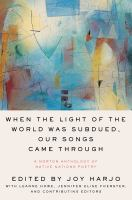 Chris Ruotolo, Director of Research in the Arts and Humanities and Liaison to American Studies: I do! I’ve been reading "When the Light of the World Was Subdued, Our Songs Came Through," a new poetry anthology edited by current United States Poet Laureate Joy Harjo. This broad-ranging collection features works by poets from over ninety tribal nations across the U.S., from the 17th century to the present day. Harjo has chosen to arrange the poems by geographic region, which underscores how deeply much of the poetry engages with the land — both in terms of its natural imagery, and in its recurring themes of spiritual rootedness, as well as loss, displacement, and resistance. Although most of the poems in the collection are written in English, Harjo’s introductory essay describes how the poems reflect native language constructs and oral traditions, creating a varied cultural record that is a distinct yet essential part of a shared canon of literature. The Monacan Nation, on whose ancestral land UVA stands, is represented by two poems by the late Karenne Wood, who was the first Monacan Indian to earn a Ph.D. at UVA.
Chris Ruotolo, Director of Research in the Arts and Humanities and Liaison to American Studies: I do! I’ve been reading "When the Light of the World Was Subdued, Our Songs Came Through," a new poetry anthology edited by current United States Poet Laureate Joy Harjo. This broad-ranging collection features works by poets from over ninety tribal nations across the U.S., from the 17th century to the present day. Harjo has chosen to arrange the poems by geographic region, which underscores how deeply much of the poetry engages with the land — both in terms of its natural imagery, and in its recurring themes of spiritual rootedness, as well as loss, displacement, and resistance. Although most of the poems in the collection are written in English, Harjo’s introductory essay describes how the poems reflect native language constructs and oral traditions, creating a varied cultural record that is a distinct yet essential part of a shared canon of literature. The Monacan Nation, on whose ancestral land UVA stands, is represented by two poems by the late Karenne Wood, who was the first Monacan Indian to earn a Ph.D. at UVA.
Katrina: I’m mesmerized. What an ambitious work with such a wide scope! So many voices mingling together in one space. And you, Leigh, tell us about the title that studies Indigeneity that you most recently got to know.
 Leigh Rockey, Video Collections Librarian: Sure! "Say We Are Nations," edited by Daniel M. Cobb, presents Indigenous voices from 1887 to 2015 through 55 short primary sources: letters, congressional testimony, interviews, essays, poems, and more. Those of us who are not historians appreciate Cobb's brief comments that introduce each resource, setting the documents within the context of the times but not imposing himself on the emerging narrative. The documents are very alive — we can read not only frustration and pain in them, but joy and humor. We can also perceive the diversity of opinions among the various Indigenous groups which comprise many nations. The poet Lyla June Johnston gets the last word: “So please do not call me an American / please do not even call me a Native American / please, I beg you, call me human.”
Leigh Rockey, Video Collections Librarian: Sure! "Say We Are Nations," edited by Daniel M. Cobb, presents Indigenous voices from 1887 to 2015 through 55 short primary sources: letters, congressional testimony, interviews, essays, poems, and more. Those of us who are not historians appreciate Cobb's brief comments that introduce each resource, setting the documents within the context of the times but not imposing himself on the emerging narrative. The documents are very alive — we can read not only frustration and pain in them, but joy and humor. We can also perceive the diversity of opinions among the various Indigenous groups which comprise many nations. The poet Lyla June Johnston gets the last word: “So please do not call me an American / please do not even call me a Native American / please, I beg you, call me human.”
What about you, Katrina? Is there a title you have on your mind?
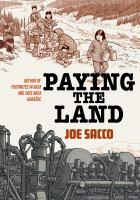 Katrina: The graphic novel "Paying the Land" by Joe Sacco is very informative about land rights in what we now know as northwestern Canada. Sacco is well known for traveling and creating comics that function as journalism documenting contemporary conflicts. In this work, Sacco tells the history of the Dene people and their intimate relationship with and reliance upon the land. He highlights how plans to extract resources from the land are culturally disruptive and threatening to traditional ways of life. The artwork is in black-and-white and covers hundreds of years of history. I recommend it to anyone trying to better understand what is at stake when it comes to land rights for Indigenous groups. Collectively, these titles will certainly help us review how North America, as we now know it, came to be, and how Indigenous cultural practices and ways of life have survived centuries of sanctioned genocide and oppression. I have a number of titles to add to my reading list!
Katrina: The graphic novel "Paying the Land" by Joe Sacco is very informative about land rights in what we now know as northwestern Canada. Sacco is well known for traveling and creating comics that function as journalism documenting contemporary conflicts. In this work, Sacco tells the history of the Dene people and their intimate relationship with and reliance upon the land. He highlights how plans to extract resources from the land are culturally disruptive and threatening to traditional ways of life. The artwork is in black-and-white and covers hundreds of years of history. I recommend it to anyone trying to better understand what is at stake when it comes to land rights for Indigenous groups. Collectively, these titles will certainly help us review how North America, as we now know it, came to be, and how Indigenous cultural practices and ways of life have survived centuries of sanctioned genocide and oppression. I have a number of titles to add to my reading list!
Library offers free access to New York Times digital resource!
The Library is now offering full online access to the New York Times to everyone in the University community!
Create a FREE account and you’ll get all the Times’ content, including world news, politics, opinion, business, the arts, book reviews, the New York Times Magazine, as well as Spanish and Chinese editions and hundreds of articles published in other languages. To create your account from off-Grounds locations, users need to have their VPN turned on.
Once your account is created, the VPN is no longer needed.
This valuable resource, located in the Library’s A-Z Databases, offers not only current issues but a complete archive from when the paper started in 1851 to the present, a distinguished history (including 132 Pulitzer Prizes for journalism) which has established the Times as an authoritative news source, currently ranking 18th in the world by circulation and 3rd in the United States
You can access the recent Times archive (with full-text issues extending back to 2003) by typing “archive” in the website’s search box. Earlier material can be found by expanding the contents menu (three horizontal lines in the upper left-hand corner of the Times homepage). Click “More” to expand it further and select “Times Machine,” which will open access to every New York Times newspaper published before December 31, 2002.
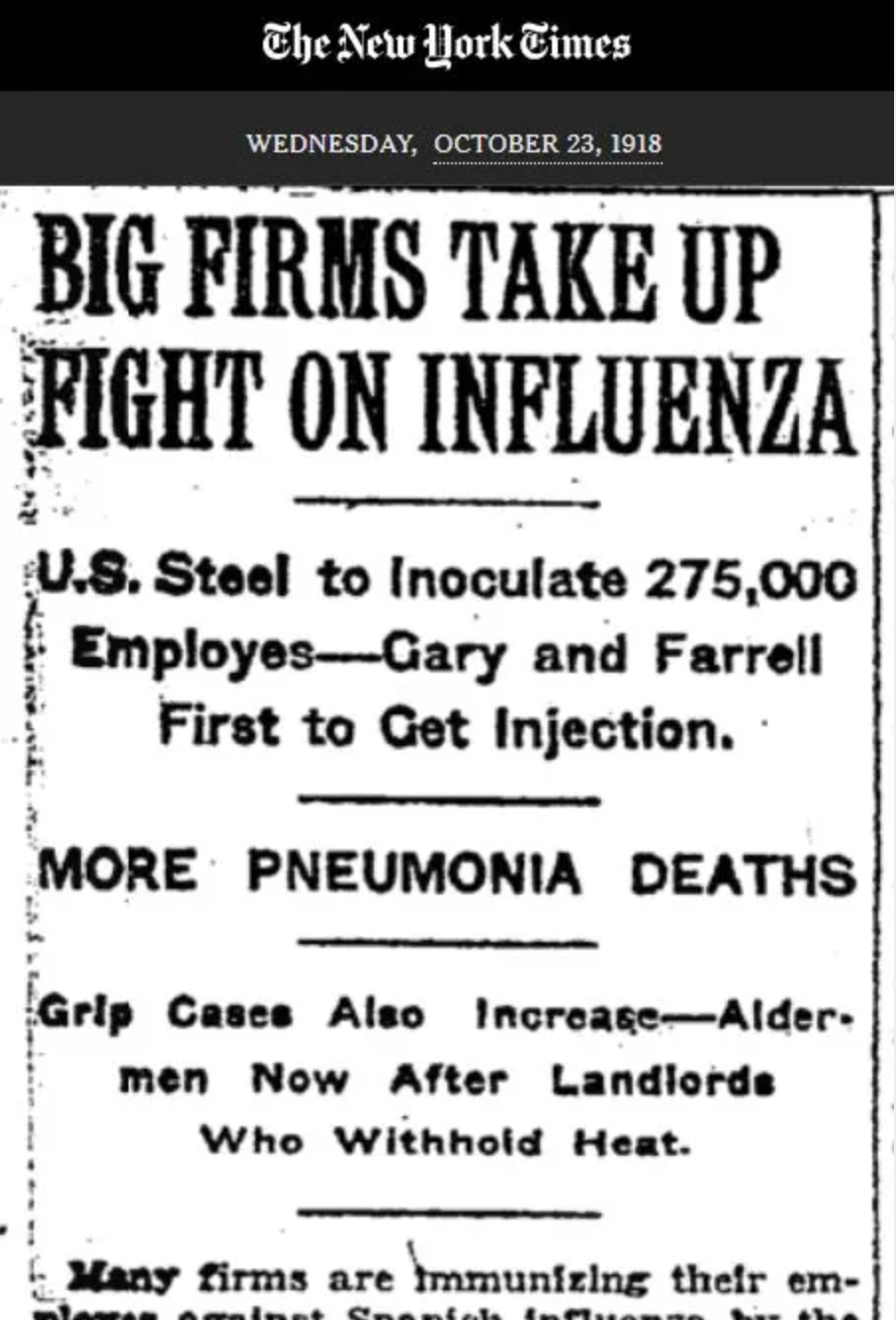
The archive allows you to experience history as it happened, starting in 1851 — from calls for slavery’s abolition to the Civil War, from two world wars to the Civil Rights movement, from Vietnam to Iraq, Afghanistan, and the COVID-19 pandemic. You will see how journalistic styles and standards have evolved over time, and how the past can sometimes seem eerily similar to the present.
Accounts are available to active students, faculty, and staff with a virginia.edu email account.
Experience unique vibe of the Music Library in Old Cabell Hall!
Guest post by UVA Librarian for Music & the Performing Arts Amy Hunsaker
The Music Library has been described as a fishbowl, with its Byzantine-inspired blue carpet squares and arched ceilings. It is very quiet there, except for music that occasionally wafts through from a rehearsal or music lecture. Quirky, hidden study spaces are tucked behind walls of books. It is perhaps the most unique library on Grounds and is worth a visit — if you can find it.
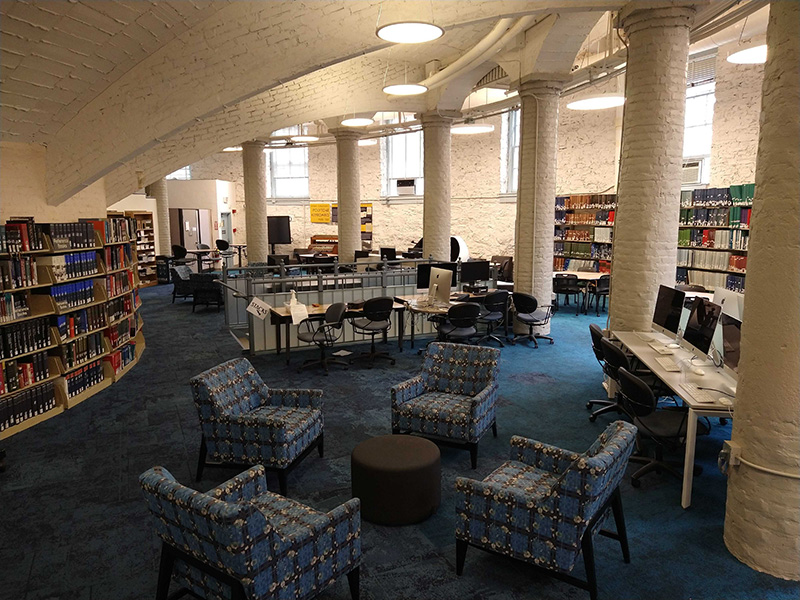
Located in the basement of Old Cabell Hall (look for the signs in the stairwell from the central lobby), the Music Library was carved out of a space that was never meant to be visited by the public. The area originally hosted a coal furnace rather than people, so the bricks in the vaulted ceiling remain bare in contrast to other nicely finished interior domes on Grounds. The ceiling has been painted white, but visitors can clearly see the perfectly stacked bricks, designed to be fireproof and last forever. The lower floor stacks area is mostly round, but the shelving is rectangular, creating curious nooks and crannies.
The Music Library currently provides access to more than 150,000 books, study scores, critical editions, and sound recordings. One of our primary services to the University is providing music scores, or sheet music. Any student, regardless of their major, can check out music written for piano, guitar, trumpet, marimba, etc. for practice or performance.
We have thousands of scores, including Broadway folios, operas, modern classical music, folk music, symphonies, chamber music, rock music, and more. If there is music you need or want and we don’t have it, we will either order a copy for the Music Library or help you borrow it from another library. We also provide access to streaming music and videos through Virgo, and there are thousands of CDs and LPs that you can check out. We sometimes host concerts and meetings, and everyone is welcome to come and study. To explore our music resources in more detail, visit the Music Subject Guide. For more information, you can Ask a librarian or phone us at (434) 924-7041.
The Music Library houses an impressive number of music resources shoehorned into a very old, unusual space. It has a unique vibe; come and see if it’s your vibe!
Browse by category
Browse by date
- November 2018 (1)
- August 2019 (1)
- November 2019 (1)
- January 2020 (1)
- November 2020 (1)
- January 2021 (1)
- September 2021 (2)
- October 2021 (1)
- November 2021 (1)
- January 2022 (4)
- February 2022 (2)
- March 2022 (2)
- April 2022 (1)
- May 2022 (3)
- August 2022 (1)
- September 2022 (2)
- November 2022 (4)
- December 2022 (3)
- January 2023 (6)
- February 2023 (9)
- March 2023 (11)
- April 2023 (6)
- May 2023 (4)
- June 2023 (3)
- July 2023 (1)
- August 2023 (3)
- September 2023 (5)
- October 2023 (7)
- November 2023 (3)
- December 2023 (5)
- January 2024 (4)
- February 2024 (8)
- March 2024 (2)
- April 2024 (6)
- May 2024 (4)
- June 2024 (1)
- July 2024 (2)
